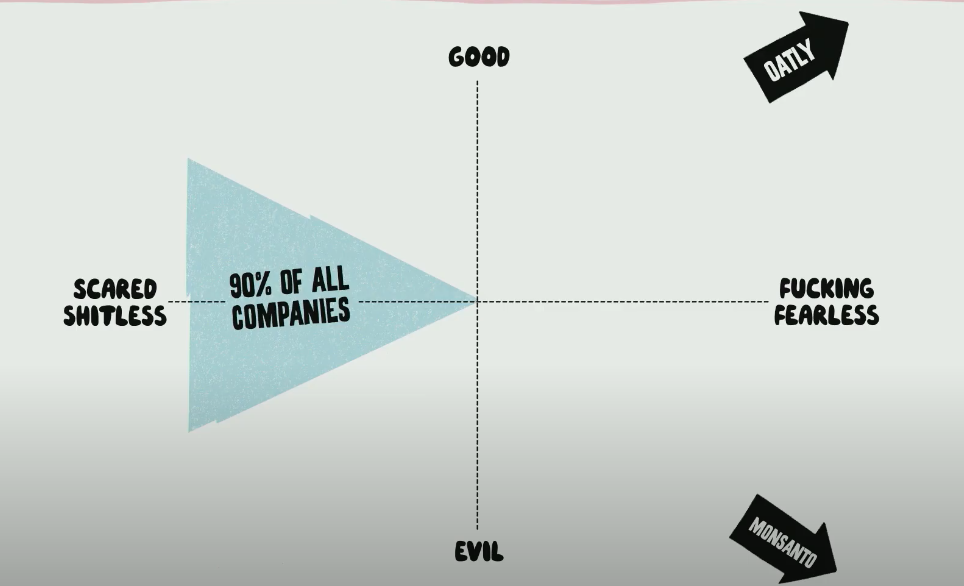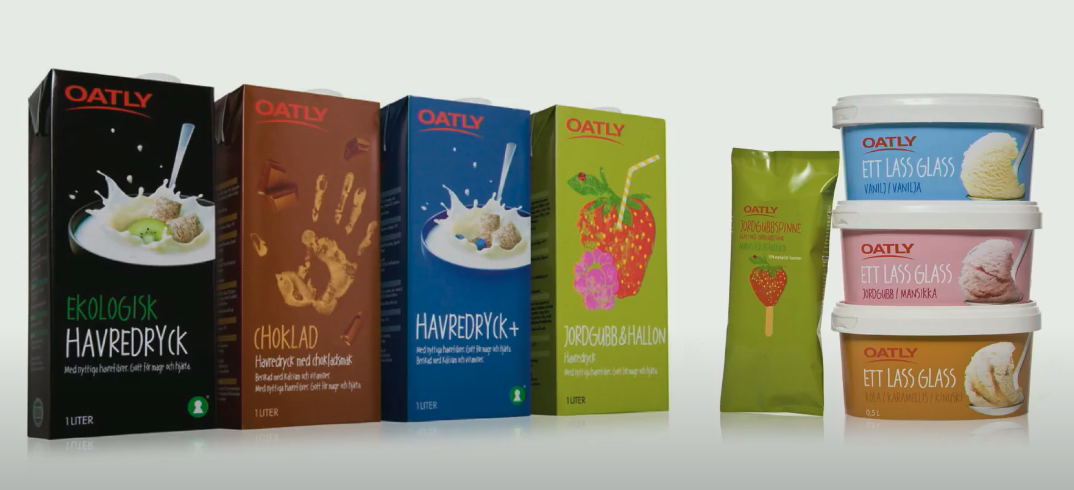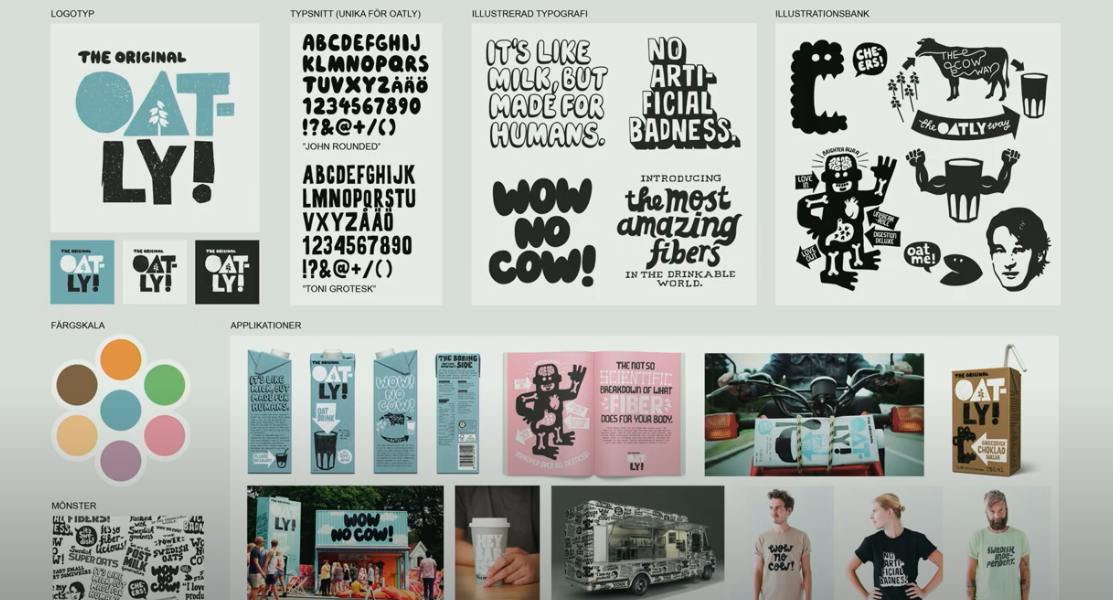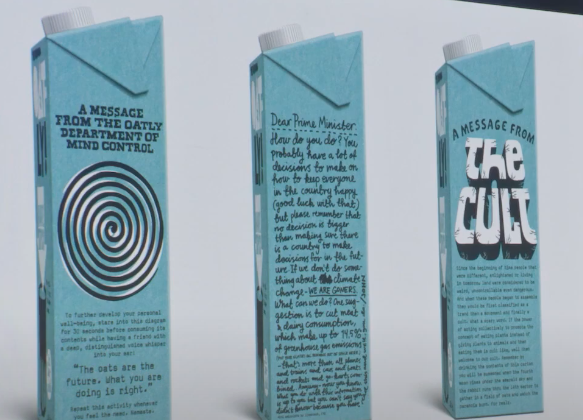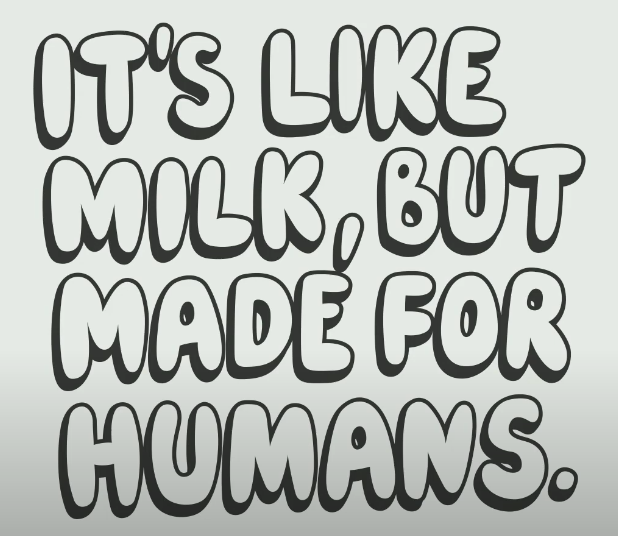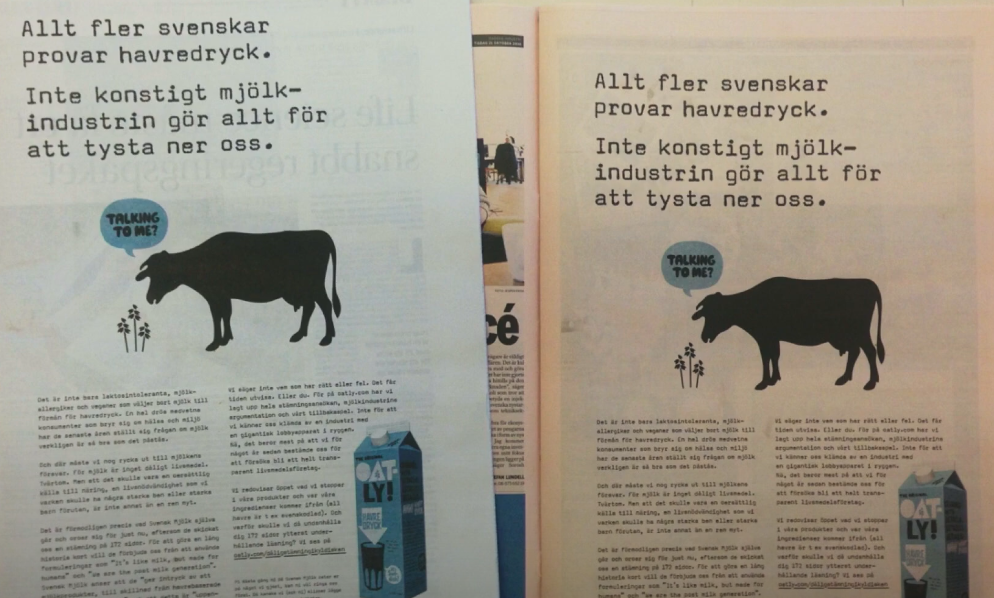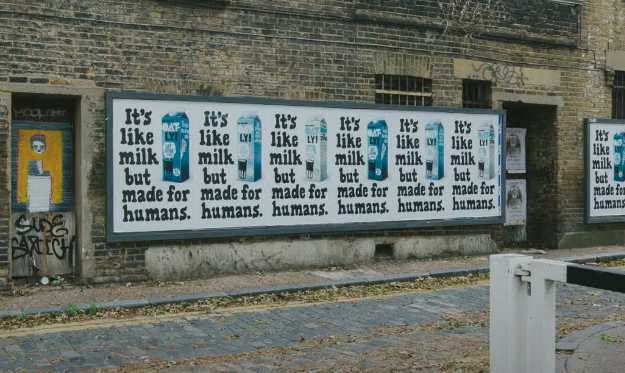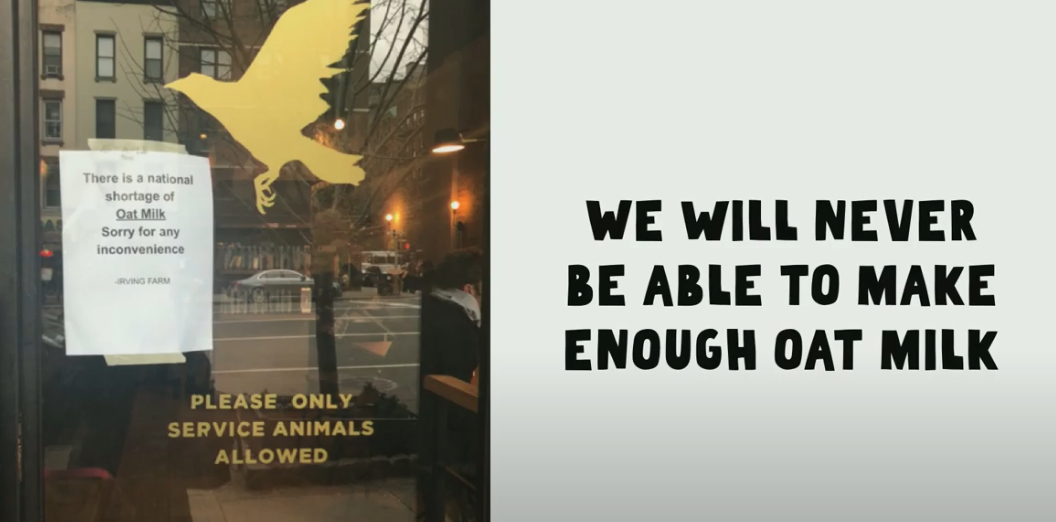1/ Oatly doesn& #39;t think like the rest. They& #39;ve been around for 20 years as a Swedish company fighting for attention. Last week, the oat milk company raised $200mm at a $2bn valuation. This is a lesson on creativity and how @oatly turns disadvantages into massive opportunities.
2/ Before I start, I want to caveat that I& #39;m in no way endorsing Oatly& #39;s product as "healthier" than milk. While I enjoy the taste myself as a treat, I& #39;m also aware Oatly has 7g of added sugars and that a 12oz glass has about the same blood sugar impact as a 12oz can of coke.
3/ But this isn& #39;t going to talk about health. I& #39;m interested particularly in deconstructing how an upstart brand flips marketing on its head and utilizes creative strategies to make a huge dent on a stale industry.
4/ Oatly Chief Creative Officer, John Schoolcraft, claims that they only keep one strategic document internally. Seems unlikely, but it& #39;s a good story that embodies Oatly& #39;s rebellious spirit.
5/ John previously worked as a copywriter and a creative director at various top agencies. With his advertising background, he had always felt that marketing directors were the ones who ruined his best work.
6/ When he joined Oatly, he immediately dismantled the entire marketing department. Instead, he put together a small in-house creative team that works on everything from product innovation to supply chain to package design.
7/ To emphasize how far he& #39;s willing to go, he calls his creative team "The Oatly Department of Mind Control."
8/ His rationale with this organizational decision is that traditional marketing teams waste too much time engaging in process with briefs, meetings, and a need to have every little thing approved.
9/ Instead, he takes his creative team and places them in ALL departmental meetings: marketing, sales, innovation, product dev, production. By sitting in every department, they know everything that& #39;s going on and execute without bureaucracy. No one needs to approve their ideas.
10/ When John came in, this is what their packaging looked like. John himself said the chocolate flavor was probably the ugliest brand in history.
11/ By reducing layers of approval, his creative team can go straight from an idea to execution. They re-did all the branding themselves with hand drawn illustrations.
12/ They also gave themselves the permission to have an opinion. If you pick up any Oatly carton from a store, they will write hilarious opinions on the carton sides. As a company, if you have an opinion, you become real. A human vs. a logo, which builds trust with consumers.
13/ They made one of their top opinions into a company slogan. "It& #39;s like milk, but made for humans." Their claim: that regular milk is for baby cows, and oat milk is for humans.
14/ In 2015, they were sued by the Swedish dairy lobby, effectively the "dairy mafia" representing dairy companies with a combined 200x greater sales than Oatly. Their lawsuit was against the slogan, saying that it made regular milk look out-dated and old-fashioned.
15/ Typically, when you get sued by a consortium of the most powerful incumbents in your industry, you back down and quietly agree to their demands.
16/ Instead, Oatly took this 174 page lawsuit and published it online. Then, they ran full-page ads in all the Swedish newspapers publishing the lawsuit. In the ad, they tell everyone that the milk lobby feels threatened so they have to resort to being bullies.
17/ Sales soared overnight. By capitalizing on this lawsuit, they went from a relatively unknown brand to a recognized and celebrated underdog.
18/ While they eventually lost the case, they decided to pour fuel on the fire. They spent $700,000 bringing their controversial slogan to the UK instead. They bought billboards across key UK stations, print media, TV, and podcasts.
19/ They even launched this ridiculous TV campaign where their CEO Toni Petersson sings WOW NO COW repeatedly while playing a keyboard in the middle of a field. https://youtu.be/_HQU0MB0D5A ">https://youtu.be/_HQU0MB0D...
20/ Their success from these initiatives propelled them into fame and they took the initiative to quietly slip into the U.S.
21/ The first to take a chance on them? @BobaGuys, a popular chain of boba (bubble tea) shops in the U.S., who bought an entire pallet and helped popularize them: https://www.tastecooking.com/inside-great-oat-milk-shortage/">https://www.tastecooking.com/inside-gr...
22/ Between 2017 and 2018, Oatly& #39;s revenue surged 10x from $1.5mm to $15mm. To further gain a foothold in the U.S. market, they took a guerilla approach.
23/ Instead of courting grocery chains or big box retailers, they identified desirable third generation shops - independent outfits with strong local followings - and dispatched team members to approach them one at a time.
24/ Schoolcraft& #39;s rationale was that the best local coffee shops make good cups of coffee. And if you wanted people to try oat milk for the first time, you wanted to make sure it was in the best possible situation.
25/ These team members would first approach baristas, give a quick spiel, and then leave behind free product. At first, baristas didn& #39;t touch Oatly - they already had other alternative milk options to serve customers.
26/ But over time, word spread amongst baristas that Oatly was the best alternative milk and baristas began to spread the word to customers. Who else would you trust most but your local barista who expertly made your coffee every morning?
27/ But over time, word spread amongst baristas that Oatly was the best alternative milk and baristas began to spread the word to customers. Who else would you trust most but your local barista who expertly made your coffee every morning?
28/ His response? "We will never be able to make enough oat milk. When we launched in the U.S., there was a national oat milk shortage within 9 months. No matter how fast we build our factories, the demand vastly outweighs the supply. We will never be able to make enough."
A special  https://abs.twimg.com/emoji/v2/... draggable="false" alt="🙏" title="Folded hands" aria-label="Emoji: Folded hands"> thank you goes to @_patriciamou who inspired me to write this. She& #39;s amazing.
https://abs.twimg.com/emoji/v2/... draggable="false" alt="🙏" title="Folded hands" aria-label="Emoji: Folded hands"> thank you goes to @_patriciamou who inspired me to write this. She& #39;s amazing.

 Read on Twitter
Read on Twitter